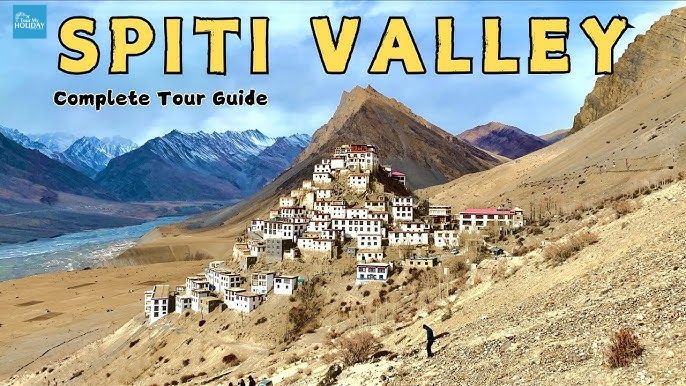Unlock the Secrets of the Himalayas: Spiti Adventure Package
Published on April 11, 2025
Spiti tour package, Tucked deep in the heart of the Indian Himalayas lies Spiti Valley – a mystical desert mountain land that feels untouched by time. With dramatic landscapes, ancient monasteries, and thrilling high-altitude passes, Spiti is not just a destination—it’s an experience. If you're looking to awaken your adventurous spirit, our Spiti Adventure Package is your perfect gateway into this Himalayan wonderland.
At Tour My Holiday, we bring you handpicked Spiti tour packages that let you discover this raw and rugged terrain in the most exciting and comfortable way possible. Whether you’re a solo traveler, a couple looking for a romantic escape, or a group of friends chasing adventure, we’ve got the perfect plan just for you.
Why Choose a Spiti Adventure?
Spiti isn't your everyday tourist spot—it's a thrilling expedition. Surrounded by snow-clad peaks, rocky gorges, and turquoise rivers, every corner here has a story to tell. Our Spiti adventure package covers offbeat routes, remote villages, ancient Buddhist culture, and jaw-dropping scenery that you won’t find anywhere else in India.
Some highlights of the tour include:
-
Crossing the iconic Kunzum Pass (4,590 m)
-
Visiting the world’s highest post office in Hikkim
-
Exploring Key Monastery, perched like a crown over the valley
-
Chandratal Lake, the moon lake reflecting magical Himalayan skies
-
And of course, plenty of adventure through treks, off-road drives, and riverside camping!
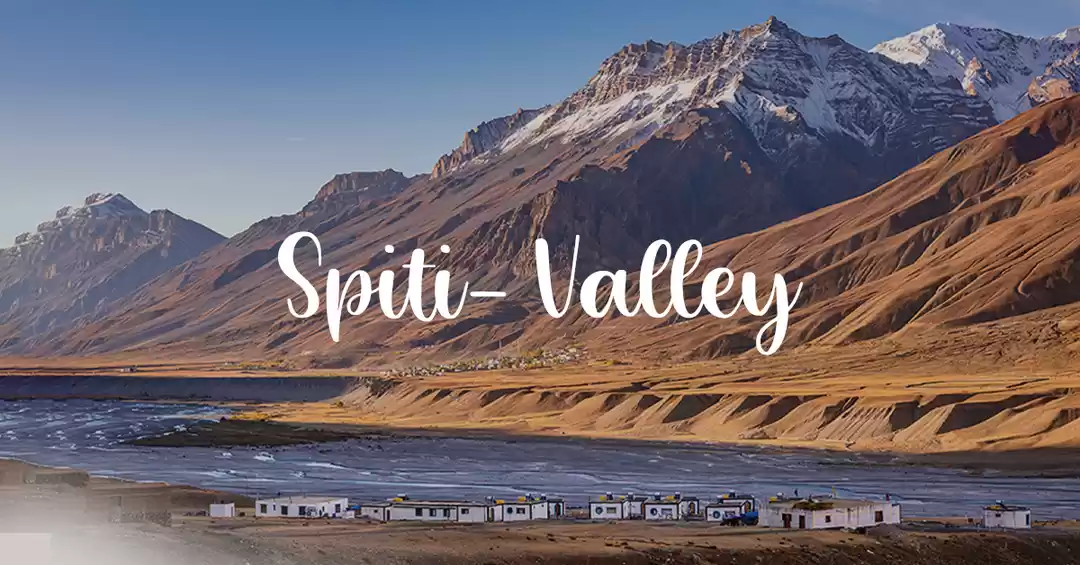
Spiti Tour Package from Delhi – Seamless and Exciting
Our Spiti tour package from Delhi ensures a hassle-free journey starting right from the capital. Whether you prefer a self-drive trip, a private vehicle, or a group departure, we handle all logistics—from permits and accommodations to meals and local guides—so you can simply focus on soaking in the majestic views.
The adventure begins with scenic routes through Shimla or Manali, climbing into higher altitudes, where every mile brings a fresh wave of excitement.
Best Spiti Valley Tour Packages for Every Type of Traveler
No two travelers are the same—and we get that! That’s why Tour My Holiday offers the best Spiti Valley tour packages tailored to your style:
-
For thrill-seekers: Off-road driving, treks, and high passes
-
For couples: Cozy stays, stargazing, and candlelight dinners in a surreal setting with our Spiti Valley packages for couple
-
For solo travelers: Budget options with homestays and safe group departures
-
For families or groups: Comfortable hotels and well-paced itineraries
Each package is curated with local experiences, sustainable travel, and unforgettable moments.
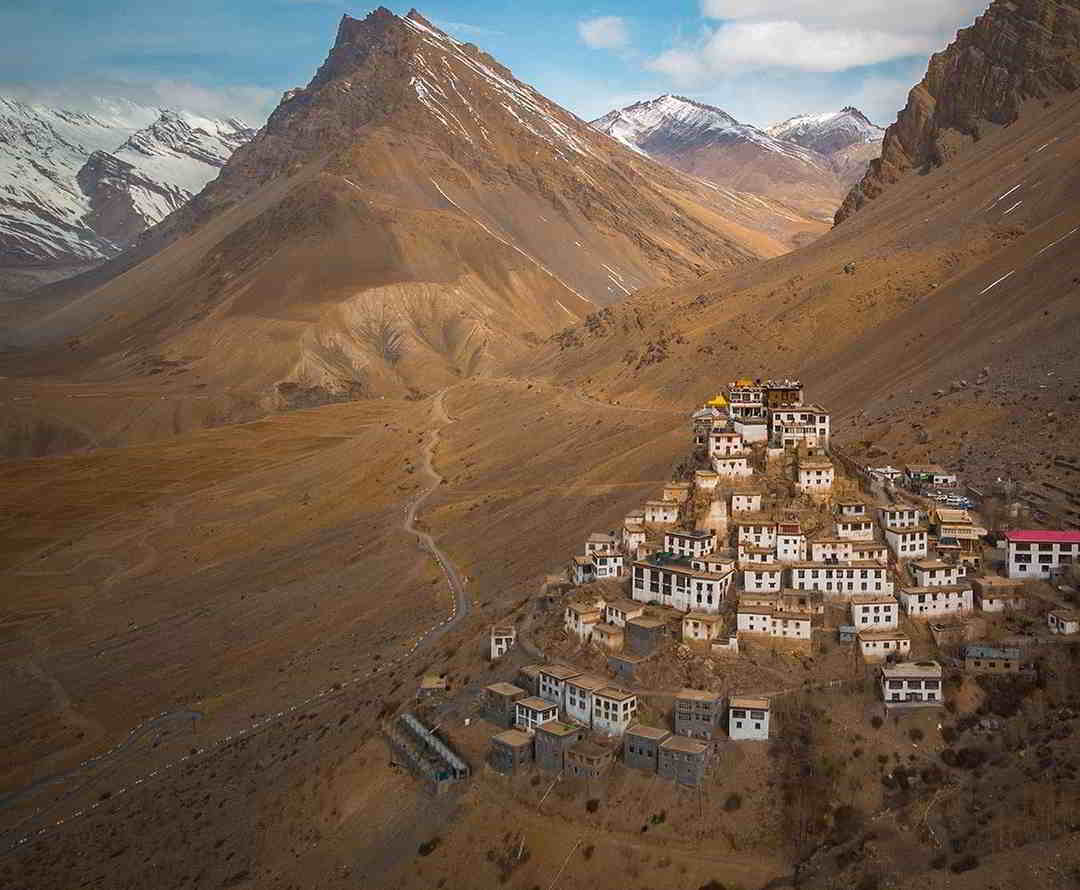
Spiti Valley Group Tour Packages – Travel with Like-Minded Explorers
Want to explore Spiti but don’t want to do it alone? Join our Spiti Valley group tour packages and make friends on the road! These fixed departure tours are perfect for solo travelers or small groups who love meeting new people and sharing stories under the Himalayan stars.
Our group tours are well-organized, led by local experts, and include everything you need—transportation, meals, permits, and adventure activities.
Spiti Valley Tour Cost – Worth Every Penny
One of the most common questions travelers ask is: How much does a Spiti tour cost?
The Spiti Valley tour cost varies depending on the route (via Shimla or Manali), the duration (usually 6–10 days), and the type of accommodation (camping, homestays, or hotels). At Tour My Holiday, we offer competitive prices with no hidden charges.
You can get a comfortable and adventure-packed 7-day package starting from ₹14,999 per person in a group setting. For premium couple packages or private tours, pricing is customized based on your preferences.
And trust us—it’s an investment in memories that last a lifetime.
What Makes Tour My Holiday the Right Choice?
-
Locally rooted, expertly guided tours
-
Handpicked stays in scenic and safe locations
-
24/7 support during the trip
-
Transparent pricing and flexible bookings
-
Adventure-packed itineraries balanced with rest and relaxation
Whether you’re planning a romantic escape, a friends’ trip, or just a break from the usual, our Spiti tour packages offer the ultimate Himalayan experience.

The Fascinating History of Spiti – A Land Carved by Time and Silence
Spiti Valley isn’t just a high-altitude desert—it’s a living museum of ancient civilizations, a silent witness to centuries of Himalayan history. Nestled between Tibet and India, Spiti has always been more than just a place on the map. It is a mystical corridor where spirituality, survival, and solitude have shaped a culture like no other.
Let’s take a step back in time and uncover the story of Spiti—the “Middle Land” between two worlds.
The Origins – A Land Between Tibet and India
The name Spiti literally means "The Middle Land", marking its unique geographic and cultural location between the Indian subcontinent and the Tibetan plateau. For centuries, it acted as a natural bridge between Indian and Tibetan civilizations—sharing influences of both but forging a completely distinct identity of its own.
Historians believe Spiti was once part of the ancient kingdom of Western Tibet, ruled by various Buddhist kings and spiritual leaders. Its remote location helped it preserve its traditional way of life, untouched by modernity for a long time.
Buddhism Blossoms in the Valley
If there’s one thing Spiti is known for, beyond its rugged landscapes, it’s the deep spiritual roots of Tibetan Buddhism. As early as the 10th century, Buddhist monks began establishing monasteries here, many of which still stand strong today—like Key Monastery, Dhankar, Tabo, and Kungri.
-
Tabo Monastery, founded in 996 AD, is often called the "Ajanta of the Himalayas" due to its ancient murals and statues.
-
Key Monastery, a fortress-like structure, became a major center for Buddhist learning and meditation.
These monasteries weren’t just places of worship—they were centers of education, art, and philosophy. Their presence shaped the cultural and intellectual spirit of Spiti.

Life in Isolation – Spiti Through the Ages
For centuries, Spiti remained isolated due to its harsh geography and brutal winters. Roads were non-existent, and the people depended on self-sustaining agriculture, barter, and ancient trade routes connecting India and Tibet. The valley’s remote lifestyle gave rise to a community that’s deeply resilient, resourceful, and spiritually rich.
The traditional homes, made of mud and stone, and the unique festivals that celebrate celestial rhythms and ancient legends, reflect a world that continues to honor its past.
A Strategic Frontier
During the British era, Spiti gained some strategic attention due to its border location. British officers traveled to Spiti on horseback, often describing it as a land "not made for men," but even they couldn’t ignore its enchanting beauty and peaceful people.
In modern times, especially after the India-China conflicts, Spiti’s location near the border has added geopolitical importance, but the valley remains peaceful and welcoming to travelers.
Spiti Today – Where the Past Lives On
While roads have now made it easier to reach Spiti, its soul remains firmly rooted in its history. The people still speak Bhoti, a Tibetan dialect. Ancient rituals are performed in the same monasteries where monks chanted a thousand years ago. Yak herders, barley farmers, and monks still shape daily life here.
Every festival, every stupa, every prayer flag fluttering in the wind whispers stories from centuries ago.
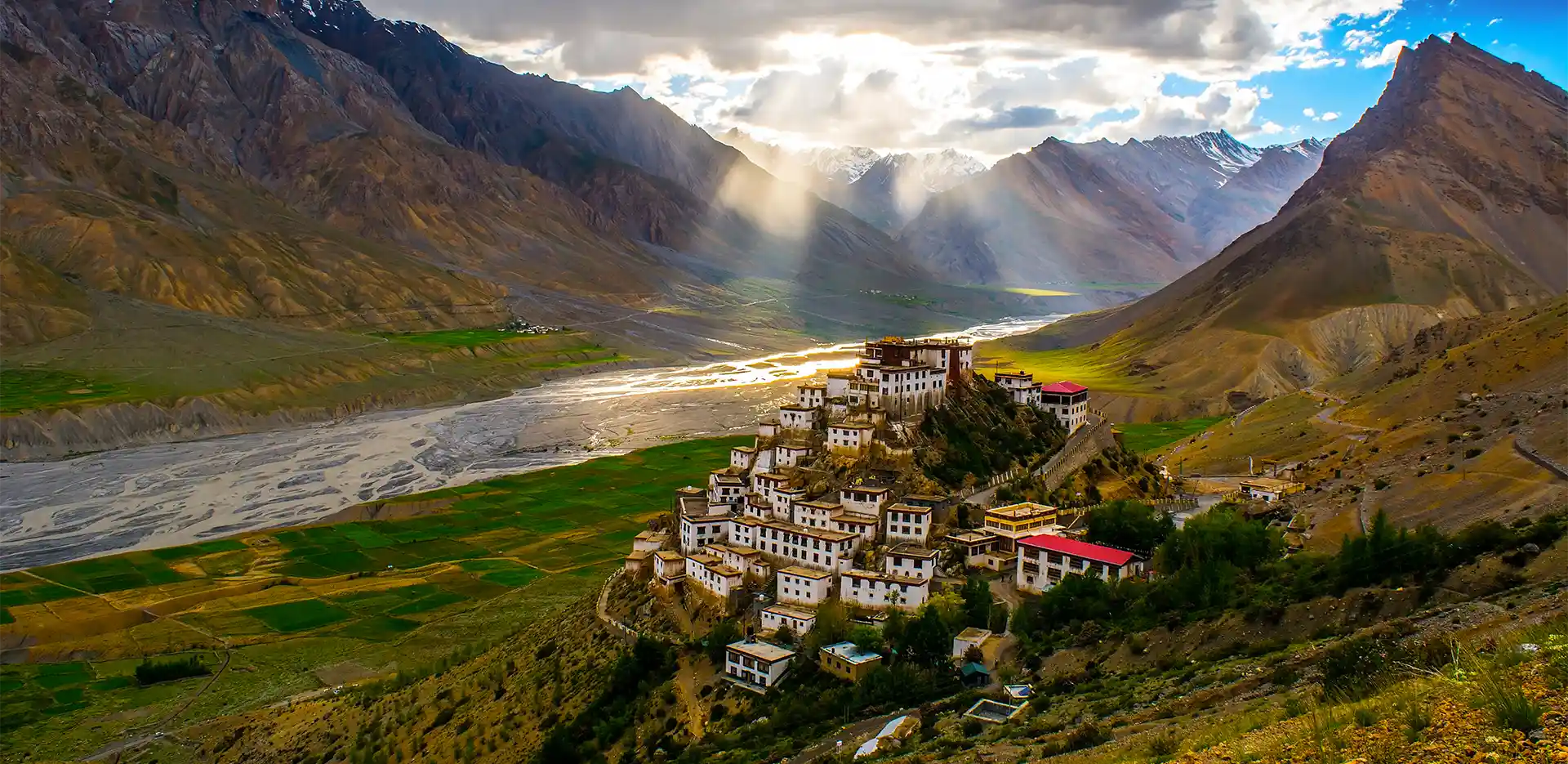
Top Sightseeing Spots in Spiti Valley with TourMyHoliday
Spiti Valley isn’t just a destination—it’s a visual poetry of rugged mountains, crystal-clear skies, and ancient monasteries that seem to float above the clouds. With Tour My Holiday, every corner of Spiti reveals a new story, a breathtaking view, or a peaceful silence you didn’t know you needed.
Here’s a curated list of must-visit sightseeing places in Spiti Valley that will make your journey unforgettable:
1. Key Monastery – The Spiritual Heart of Spiti
Perched at 13,668 ft, Key Monastery is the largest and most iconic monastery in Spiti. With its fortress-like architecture and panoramic views of the Spiti River, it’s a photographer’s dream and a soul-soother for spiritual seekers. Don’t miss the chanting sessions with monks—it’s an experience in itself.
2. Chandratal Lake – The Moon Lake of Dreams
A jewel hidden between towering peaks, Chandratal reflects the changing skies like a mirror. Its name means “Moon Lake,” and when you see its crescent shape glowing under a starry night, you’ll know why. Camp near the lake with Tour My Holiday and watch the Milky Way unfold above you.
3. Tabo Monastery – The Ajanta of the Himalayas
Over 1,000 years old, Tabo Monastery is a UNESCO-worthy gem filled with ancient murals, manuscripts, and thangka paintings. It’s not just a spiritual site—it’s living history. Some even say the Dalai Lama wishes to retire here someday!
4. Dhankar Monastery – Where Time Stands Still
Clinging dramatically to a cliffside, Dhankar Monastery overlooks the confluence of Spiti and Pin rivers. It was once the capital of the Spiti Valley and still feels like a forgotten kingdom in the clouds. From here, you can also trek to the serene Dhankar Lake nearby.

5. Hikkim – Home to the World’s Highest Post Office
Fancy sending a postcard from 14,400 ft? Hikkim lets you do just that! This tiny hamlet is home to the world’s highest post office, still functioning and charming travelers from all over the world. It’s a simple joy, but one you’ll remember forever.
6. Langza – The Fossil Village Beneath Buddha’s Gaze
At Langza, a giant Buddha statue watches over the valley, and time seems to stand still. Known as the "Fossil Village", this place is rich in marine fossils from when the region was underwater millions of years ago! It's also the perfect spot for some peaceful stargazing.
7. Komic – The Highest Village Connected by a Motorable Road
Claiming the title of the highest motorable village in the world, Komic is straight out of a Himalayan fairy tale. The air is thin, but the views are infinite. Visit the Komic monastery and sip hot butter tea with the locals—it’s a true high-altitude experience.
8. Pin Valley National Park – A Wildlife Wonderland
Lush green against the barren Spiti backdrop, Pin Valley is a protected haven for rare wildlife like snow leopards, Himalayan ibex, and red foxes. It’s also a hub for adventure with great hiking trails and tranquil villages.
9. Kaza – The Heartbeat of Spiti
As the main town of Spiti, Kaza is where modern comforts meet mountain charm. It’s your base for exploration, full of cozy cafés, local markets, and friendly faces. From here, your Spiti adventure package unfolds day by day.
10. Losar – The Gateway to Spiti
Located at the entrance of the valley from Manali side, Losar is the first glimpse of Spiti’s stark beauty. Surrounded by vast open landscapes and glacial streams, it’s perfect for a peaceful break before the real journey begins.
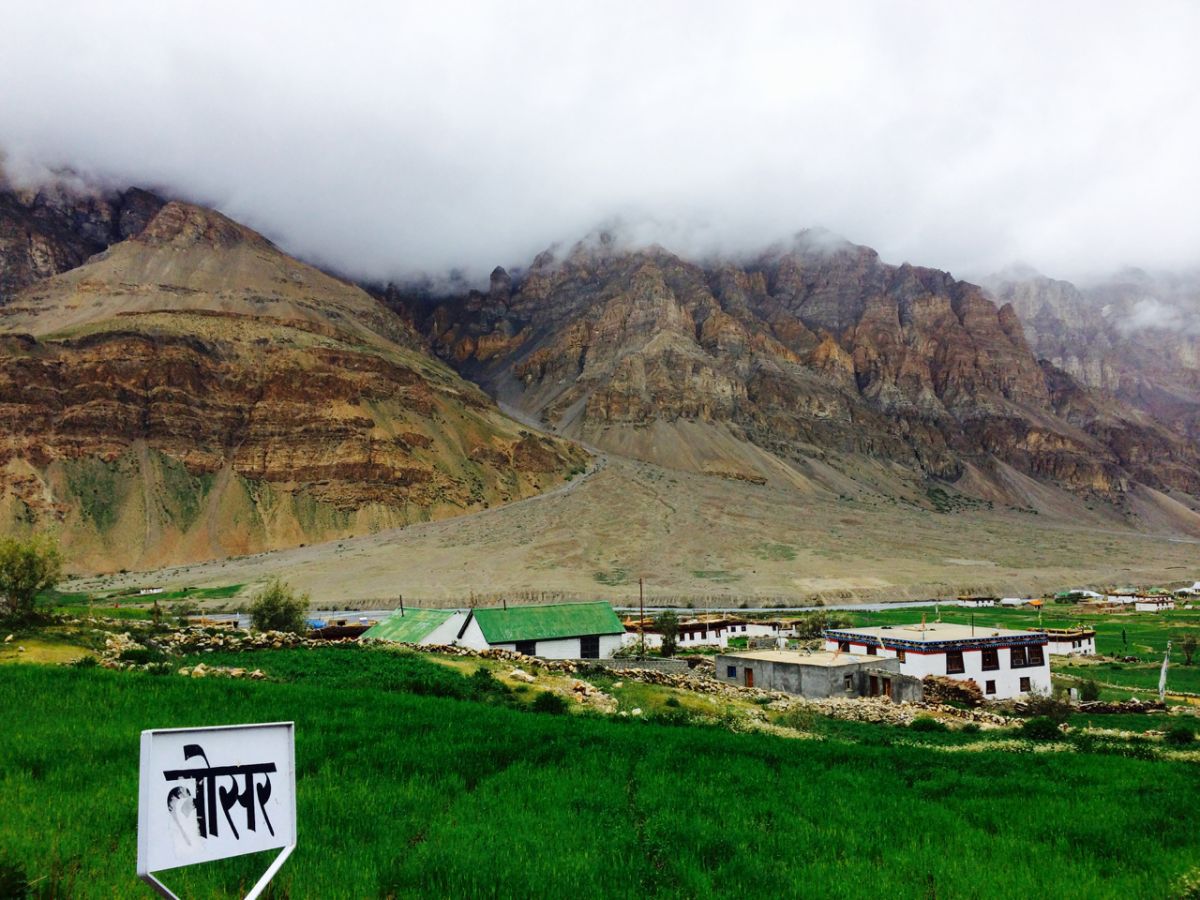
Thrills & Chills in the Himalayas: Adventure Activities and Weather in Spiti Valley
Welcome to Spiti Valley tour package—where adventure lives in every corner, and the weather keeps you on your toes. With its dramatic landscapes, icy rivers, hidden trails, and cloud-kissed mountain passes, Spiti is not just a place to see—it's a place to feel. If you're craving adrenaline with a side of serenity, Spiti’s rugged beauty is the playground you’ve been searching for.
Let Tour My Holiday guide you through the best adventure activities in Spiti and help you understand what weather to expect on your Himalayan expedition.
Top Adventure Activities to Do in Spiti Valley
Adventure in Spiti isn’t loud or flashy—it’s raw, real, and unforgettable. Every path you take here pushes your limits and opens your eyes to nature’s grandeur.
1. High-Altitude Trekking
Spiti is home to some of the most offbeat and scenic treks in the Indian Himalayas. Trails like Dhankar Lake Trek, Pin-Parvati Pass, and Komic to Hikkim hike offer surreal views, quiet routes, and encounters with untouched nature.
2. Mountain Biking
Ride through winding mountain roads, past glaciers and valleys, on a thrilling mountain biking adventure. The rugged terrain from Kaza to Kunzum Pass is a favorite among seasoned bikers.
3. Camping Under a Billion Stars
The skies in Spiti are some of the clearest in India. Set up camp near Chandratal Lake or in remote villages like Langza or Komic, and gaze at galaxies you didn’t even know existed.
4. River Rafting in Spiti River
Yes, there’s rafting in Spiti! During the warmer months, sections of the Spiti River offer white-water rafting opportunities with stunning gorges, cliffs, and wild landscapes as your backdrop.
5. Off-Road Jeep Safari
Spiti’s remote corners are best explored through off-roading jeep safaris. Cross high passes, frozen streams, and ghost villages that don’t exist on any map.
6. Snow Adventures in Winter
For those who dare, winter in Spiti offers a whole new level of thrill—snow treks, frozen lake walks, and even snow leopard spotting if you're lucky!
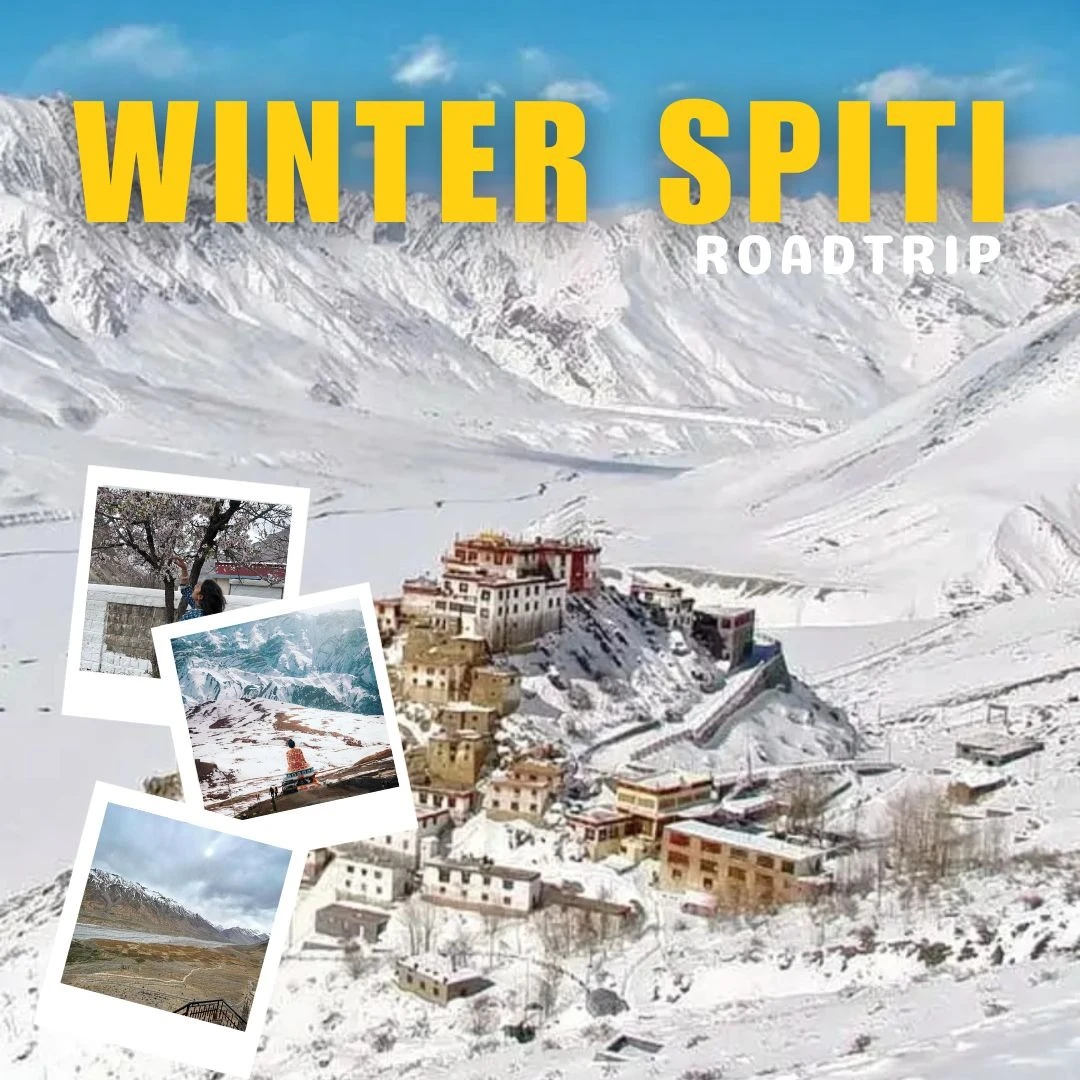
Weather in Spiti Valley – A Year-Round Himalayan Experience
The weather in Spiti Valley is as unique as its breathtaking landscapes. Nestled high in the Himalayas, Spiti remains cold and dry for most of the year, making it a land of dramatic contrasts—sunny skies by day, freezing temperatures by night, and an ever-present sense of stillness in the air.
Summer (May to July)
Summer is the best time to visit Spiti, with daytime temperatures ranging between 15°C to 25°C. The skies are clear, the valleys bloom with wildflowers, and all roads are open. It’s the perfect time for sightseeing, trekking, camping, and photography. Nights are cool but manageable with warm clothing.
Monsoon (Late July to Mid-September)
Unlike other regions, Spiti falls in a rain shadow zone, so it receives minimal rainfall. Roads might be tricky in some areas, but overall, the valley stays dry. This is a great time to visit for peaceful travel, away from the tourist rush.
Autumn (September to October)
Spiti transforms into a golden paradise during autumn. With temperatures between 5°C to 15°C, the weather is crisp and pleasant. The crowds thin out, the air turns sharp, and the landscapes look even more dramatic. It’s perfect for photography and cultural exploration.
Winter (November to April)
Spiti in winter is magical but extreme. Temperatures drop to as low as -25°C, roads close due to snow, and only the adventurous venture in. However, those who do are rewarded with snow-covered villages, frozen rivers, and complete silence—Spiti in its purest form.
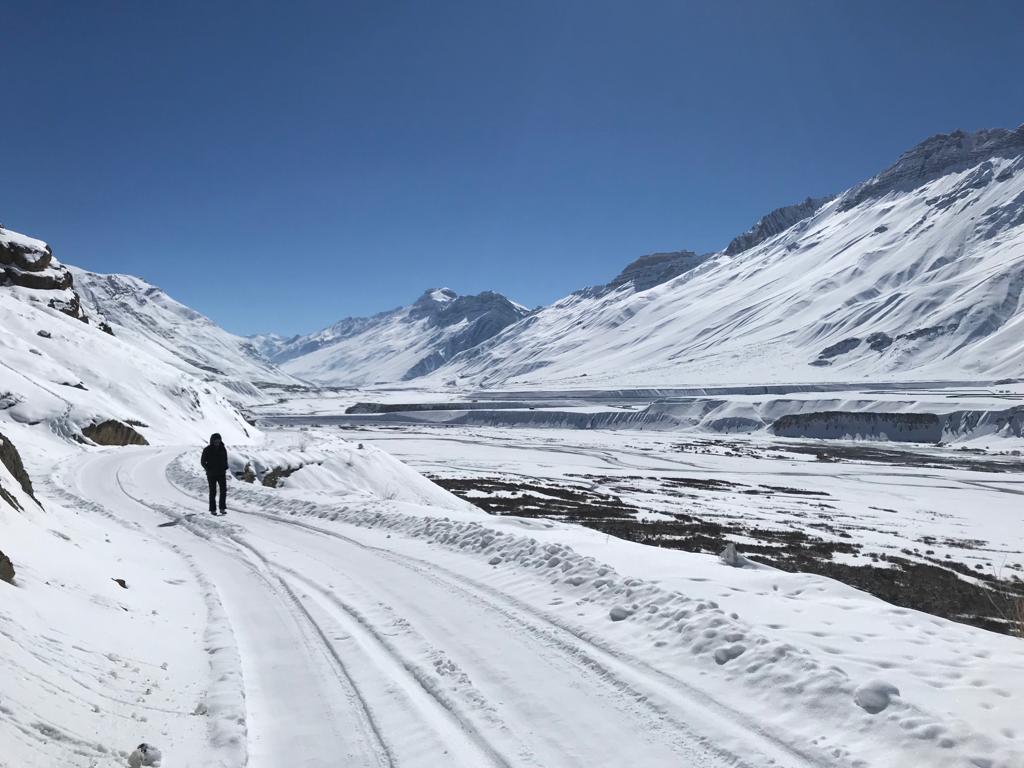
No matter the season, Spiti’s weather adds a layer of adventure and awe to your journey. With Tour My Holiday, you can explore this cold desert safely, comfortably, and at the perfect time for your dream Himalayan escape.
Frequently Asked Questions:
1. What is the best time to visit Spiti Valley?
May to October is ideal, with clear skies and open roads. Summer and early autumn offer the best weather for sightseeing, trekking, and travel.
2. Is Spiti Valley accessible in winter?
Most routes, especially from Manali, are closed due to heavy snowfall. However, Spiti can be accessed from Shimla side with proper winter gear and expert guidance.
3. How cold does Spiti get in winter?
Temperatures can drop to -25°C in peak winter. It’s extremely cold, so only experienced travelers or adventurers should plan a winter visit.
4. Does it rain heavily in Spiti Valley?
No. Spiti lies in a rain shadow zone and receives very little rainfall, making it ideal for monsoon travel when other hill stations face landslides.
5. What clothes should I pack for Spiti?
Layered clothing, thermals, jackets, gloves, and woolens are a must—even in summer, nights can get chilly. For winter, heavy-duty snow gear is essential.
6. Can I visit Spiti during the monsoon?
Yes. Since Spiti gets minimal rain, it remains accessible. The landscape turns lush, and there are fewer tourists, making it peaceful and serene.
7. Are roads safe during changing weather?
Yes, but weather can impact road conditions. Travel with experienced operators like Tour My Holiday who monitor routes and ensure safety.
8. How is the oxygen level in Spiti?
Due to high altitude, oxygen levels are lower. Stay hydrated, ascend gradually, and avoid overexertion, especially if you’re new to high-altitude travel.
9. Does snowfall occur in Spiti?
Yes, heavy snowfall occurs from November to March, especially in places like Kaza, Kibber, and Nako, transforming Spiti into a winter wonderland.
10. Is Spiti suitable for families during summer?
Absolutely! Summer weather is pleasant and safe for families. With Tour My Holiday, you get comfortable stays, guided travel, and family-friendly itineraries.
